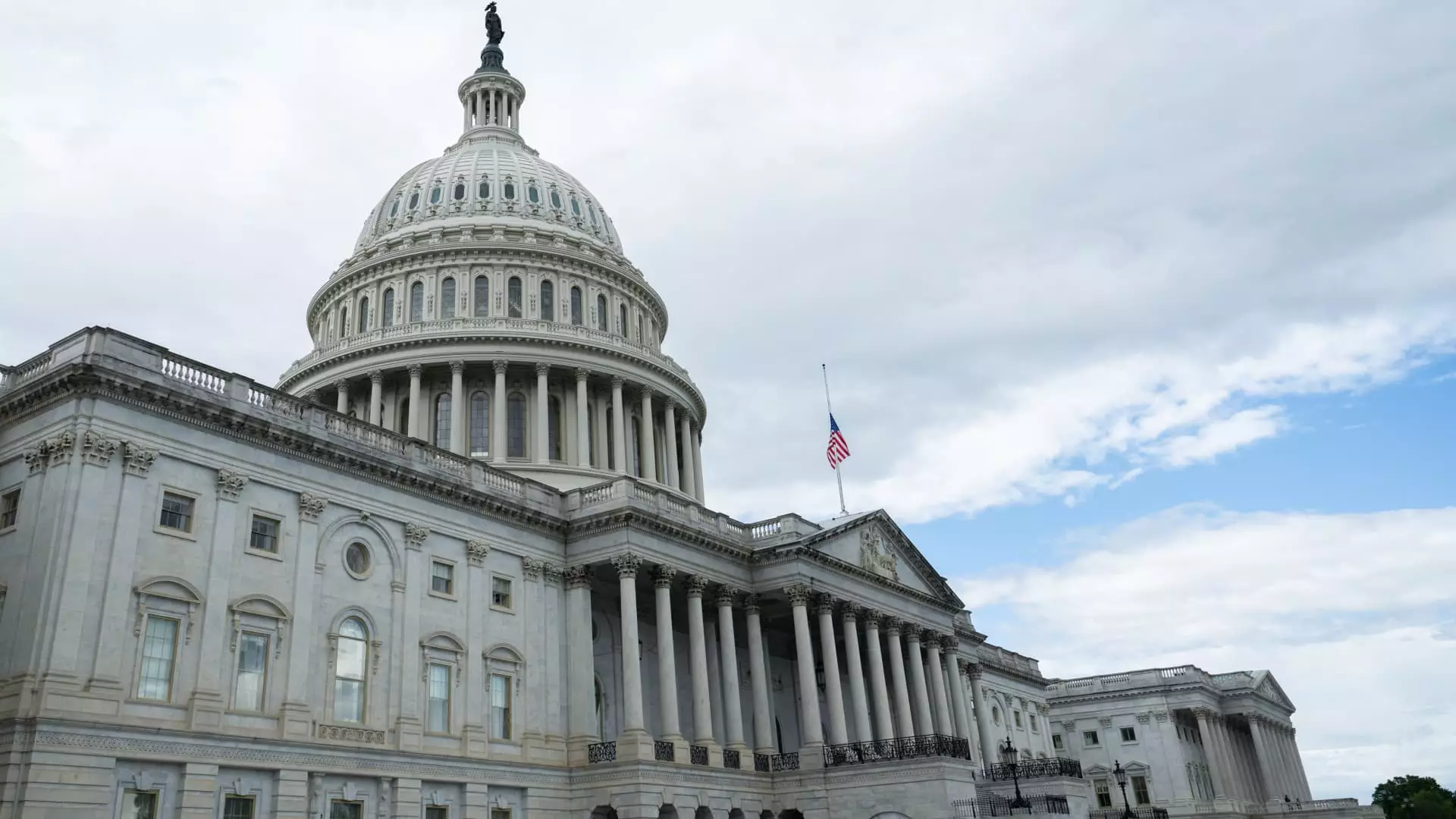In an audacious move, House Republicans advanced a sweeping tax cut package that many financial experts warn could bury the U.S. economy under mountains of debt. As negotiations transition to the Senate, there is growing concern that this legislation could usher in a fiscal catastrophe that harms everyday Americans. It isn’t just an abstract mathematical calculation; the repercussions of increasing the national debt by trillions could strike at the very heart of American households, impacting everything from mortgage rates to consumer loans.
Recent analyses project that the tax cuts, which predominantly benefit the affluent, could inflate the national debt by between $3.1 trillion to $3.8 trillion over the next decade, depending on interest and economic variables. Critics can’t ignore the red flags raised by economists like Rep. Thomas Massie, R-Kentucky, who likened the bill to a “debt bomb ticking.” Such insights should resonate profoundly—even for citizens who may not fully grasp the intricacies of federal budgeting.
The Inevitable Rise of Interest Rates
Rising national debt isn’t merely a statistic confined to fiscal reports; it directly correlates to increasing household expenses. Experts suggest that a significant uptick in the debt-to-GDP ratio would likely catalyze higher interest rates across the board. Mark Zandi, chief economist at Moody’s, posits that rising debt burdens will compel consumers to face what amounts to a hidden tax, one that appears in the form of increased financing costs for homes, cars, and other essential purchases. In practical terms, as interest rates climb, the possibility of homeownership fades—a particularly nefarious outcome for first-time buyers hoping to stake their claim on the American Dream.
For example, if the debt-to-GDP ratio jumps from its current level to 130%, Americans could see mortgage rates escalate from nearly 7% to about 7.6%. This isn’t merely a half-point increase; it represents a substantial barrier for many potential homeowners, driving them further from the opportunity for financial stability. Furthermore, as many Americans tend to be oblivious to the intricacies of federal debt, they remain vulnerable to these subtler impacts on their lives.
Is the “One Big Beautiful Bill Act” a Recipe for Disaster?
Dubbed the “One Big Beautiful Bill Act”, the House’s tax legislation is cloaked in appealing rhetoric yet seems fraught with peril on closer examination. The substantial tax cuts—estimated at around $4 trillion—provide notable advantages to wealthy households while extricating funds from vital programs designed for lower-income Americans. This shift is particularly disheartening given the growing need for robust safety nets like Medicaid and food assistance at a time when many are grappling with inflation and economic instability.
Some proponents of the bill argue that certain revenue mechanisms, such as the imposition of tariffs, may help counterbalance its fiscal shortcomings. However, it would be naive to view tariffs as a stable financial cushion; they are subject to the caprices of future administrations and litigation, leaving them open to facile compromise. Such erratic revenue streams profoundly undermine the validity of the bill’s projected fiscal outcomes.
The Bond Market’s Fickle Nature
The ramifications of increased debt extend into the bond market, where investors grow jittery amidst rising yield expectations. With each incremental rise in interest rates due to heightened debt risk, the value of existing bonds declines, damaging the portfolios of investors reliant on fixed-income instruments. Philip Chao, chief investment officer at Experiential Wealth, warns that current Treasury yields could rise in response to escalated perception of risk, which would ultimately harm bondholders and erode net worth—an outcome many are simply not prepared for.
Concerns are exacerbated by the broader backdrop of U.S. sovereign credit ratings, which have seen downgrades amidst worries over the burgeoning budget deficit. This disquiet in the bond market symbolizes a broader sentiment of worry regarding federal fiscal responsibility. It suggests that our economic fabric is fraying, with consequential effects rippling across various sectors of society, from the investment community to average consumers struggling to make ends meet.
The Untrammeled Course of U.S. Debt
Despite the overwhelming evidence against the bill, it appears that the legislators are forging ahead with reckless abandon, seemingly indifferent to the consequences. As noted by experts like Kent Smetters of the Penn Wharton Budget Model, even if the bill takes a nosedive, the U.S. debt burden is on a trajectory to rise, hinting at systemic issues that transcend the political drama of Capitol Hill. To pass such legislation does not merely reflect poor judgment; it presents a danger that could imperil the economic well-being of countless Americans.
Ultimately, our federal governance must acknowledge the gravity of this “debt disaster.” Blindly reckoning taxes while simultaneously cutting spending for essential services tilts the scales of equity and prosperity. It’s an unsustainable, harmful play that must be scrutinized, debated, and ultimately reformed by responsible leaders who prioritize the welfare of their constituents over party lines or fiscal novelties.

